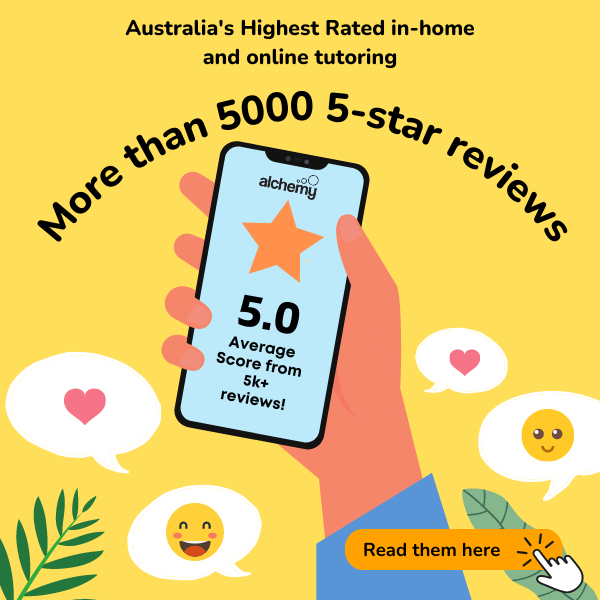Most families find hiring a private tutor a costly but necessary venture. It gets worse when you don’t know the going price for a private tutor and aren’t sure whether you’re being overcharged or getting value for your money.
Various factors must be considered when determining how much you should pay a private tutor per hour, such as whether you will be doing the tutoring online or in person and whether the tutoring will be individual or group. This guide covers everything you need about tutoring prices and whether you get competitive rates for private tutoring per hour.
Factors to Consider When Determining How Much to Pay Your Tutor Per Hour
With private tutoring costs, there are several factors you should consider when deciding how much you should pay per hour.
Duration of the Tutoring Session
First, tutoring sessions vary significantly in length and content. This depends on the academic goals of the student being tutored. Some online tutoring services may provide shorter durations than private ones, which can provide longer single durations.
If you’re looking for longer durations than one hour, you may need to pay an additional fee to cover the extra time needed.
Online or Private Tutoring
Choosing an online or private tutor will also affect the cost of tutoring per hour. Tutors offering online tutoring services may offer shorter sessions than private tutors who provide longer tutoring sessions. The type of tutoring you require will affect the fees for tutoring services.
Qualifications and Experience
The qualifications and experience of the tutor are also factors in the cost of hiring them. Their expertise in the subject material will play a significant role when setting per-hour rates. All this information should be considered when deciding whether a tutoring rate is fair and reasonable.
After all these considerations, if you agree on a price with the tutor, you should ensure a detailed, documented and transparent agreement so that both parties understand the terms they agree to before committing to anything long-term.
This allows you to be better equipped and organised financially and get an arrangement that works well for everyone involved.
How Much Should You Pay a Tutor If You’re Looking for Help in One Subject Area?
The number of areas you need help with will also impact the tutoring costs. Tutoring rates are typically based on the expertise of the tutor, the amount of time they spend tutoring, and their traveling costs.
The cost of tutoring can vary widely, ranging between $40 and $150 per hour, depending on the tutor’s qualifications and level of experience.
Before hiring a tutor, it is vital to research the rates and determine the range of competitive rates and what would work for your budget.
Though tutoring fees may seem expensive, it’s vital to consider tutoring as an investment in your academic future. Tutoring can empower you academically, improve your grades and enhance your confidence as a student.
Additionally, tutors have many years of experience and knowledge that can benefit you academically in many ways, and the more experienced the tutor, the more likely their tutoring fees will be higher. Additionally, if you want to take lessons in more than one subject matter or test preparation, the cost of tutoring could be higher.
Advantages of Hiring a Tutor
Hiring a private tutor for yourself or your child has many advantages that make the investment worth it. Some of these benefits include the following:
Customised tutoring
Working with a private tutor means receiving instructions tailored to your needs. A good private tutor takes time to understand your needs and customise the lessons to match your needs and learning style. This allows tutors to be more effective in delivering instructions because they use methods that allow students to maximise comprehension and retention of information.
Get in touch for online maths tutoring.
This can be highly beneficial for high school students or elementary students struggling with a particular subject or needing help in their studies.
Flexibility
Private tutoring offers more freedom in scheduling, making it ideal for busy families that want to balance tutoring with family life and other commitments. Private tutors not only allow you to choose when you want to take lessons but also allow you to change lessons on short notice. The flexibility also means students can keep up with the things they love and take tutoring during their free time.
One-on-one tutoring
In larger classes, some students may struggle to keep up because they require more one-on-one attention that teachers cannot maintain in such settings. Private tutoring allows such students to get the one-on-one attention they need to grasp concepts and cover learning gaps they might have problems with.
Also, private tutors help students improve their confidence and self-esteem by creating an environment encouraging them to ask questions and discuss topics in depth. This can result in a better understanding of the material for improved overall grades.
Are There Drawbacks to Paying a Tutor by the Hour Instead of Working Through a Tutoring Company?
When working with private tutors, the tutoring rates vary widely depending on the tutor’s experience and location.
On the other hand, tutoring companies like Alchemy Tuition charge a flat fee for their services. As a result, paying for online or in-person tutoring with a private tutor can be more expensive than going through a tutoring company.
Additionally, with Alchemy Tuition, you can enjoy some of the benefits of private tutors, such as flexible tutoring, by choosing how often you meet and for how long.
Tutoring companies also vet and verify the credibility and credentials of their tutors, ensuring you get the best and most qualified tutors for the subject matter in question.
How Do You Find a Good Private Tutor for Your Family and Budget?
Many families find it difficult to find the right tutor for their needs and budget, especially when searching for a private tutor.
It’s important to find a tutor with tutoring costs that are close to your budget. You should also consider the tutoring style and methods the tutor uses during the lesson.
Some tutors use conventional methods, such as teaching from a textbook or their previous notes. In contrast, others prefer to incorporate technology and use real-world examples to create a more lasting impression. When choosing a tutor, picking one whose tutoring methods align with your child’s learning style is vital.
You will also want to consider the tutor’s availability. Some tutors only offer online tutoring or in-person tutoring sessions during certain days or hours. You have to be certain the tutor is available when you need them. You have to ask the tutor about their qualifications and rates and the benefits they offer.
Basically, it’s a toll order you must keep up with, and many families rarely get the right tutor for their needs and budget. However, Alchemy Tuition simplifies this process by providing an education expert who carefully considers your needs and matches you with the perfect tutor. We do all the due diligence to ensure our tutors are qualified and have the best experience. With our unique selection process, we ensure we get the best tutors in Australia, so you always get the best tutors at competitive prices.
How Much Does It Cost If You Want a Tutor to Come to Your Home?
The cost of having the tutor come to your home will depend on several factors, including the charge for tutoring per hour and the distance the tutor has to travel. Private tutoring fees will vary depending on the tutor’s geographical location.
Generally, tutoring costs in metropolitan areas are higher than in rural areas. The cost will also vary depending on whether you choose a tutor or a group session. Even in the case of group tutoring, most tutors will still manage to provide an individualised learning experience.
Online tutors are a better option because no travelling logistics are required. Alchemy Tuition mitigates these factors by working with tutors who are born and raised in your location. This keeps the cost of having the tutor come to your location manageable and maintains the convenience of the tutoring sessions.
Closing Remarks
Tutoring is an excellent investment for students at all levels of the curriculum. It allows the student to achieve their full potential and improve their grades or test scores. With tutoring companies like Alchemy Tuition, students can also develop a love for learning and improve confidence and self-esteem.
However, before families can enjoy these benefits, they must pick the right tutor and find one matching their budget. This can be a private tutor or a tutoring company. The latter makes finding the right tutor much easier and more manageable and increases the chances of a positive experience and results for the tutor. Also, tutoring companies like Alchemy Tuition provide more competitive tutoring rates while ensuring you get qualified, trained, and experienced tutors.














